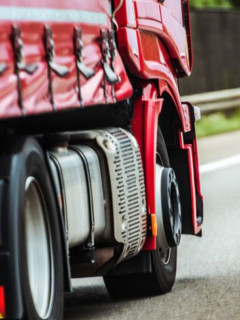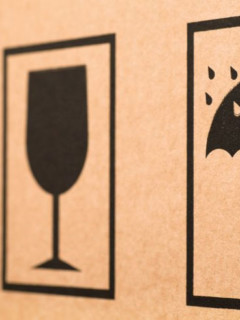Did you know that there are more pallets in circulation in Europe than the number of inhabitants we count? According to the last census (in 2015), there were 3 billion pallets in the EU. That’s 4 per inhabitant. The wood or wood fibre variants are the most popular among them. Any idea why that is? One explanation can be found, among others, in the international ISPM15 standard. Read on to find out exactly what this means and check your knowledge about the rules, types and benefits of wood pallets.
1. What is the ISPM15 standard?
Wood is a natural product and can therefore house living organisms. Of course, harmful parasites or bacteria would prefer to be kept out of your borders. The International Plant Protection Convention or IPPC came up with a solution for this. All wooden packaging materials used for export must comply with the so-called ISPM15 standard.
ISPM stands for International Standards for Phytosanitary Measures. The number 15 simply refers to the fact that this is the 15th measure in a longer list of standards set by the IPPC. Wooden packaging meeting this standard has gone through a special treatment process (often heat-based). As a result, they no longer contain harmful organisms and are therefore safe to use for export.
2. How are wood pallets treated?
Since 2015, heat treatment or Heat Treatment (HT) has been the only treatment allowed for general applications such as storage and transport. Wooden packaging material is heated according to a specific time and temperature schedule so that both the core and the whole wooden profile reach minimum +56°C for at least 30 minutes. This method of treatment can effectively kill many harmful life forms such as insects and worms.

3. What marking does a treated pallet get?
Wooden packaging that has been treated correctly is indelibly marked with a special symbol. This takes the form of an ear of corn with a number of numbers and figures to its right. One should always affix this legibly on at least 2 opposite sides of the product. You will then find the following information on this symbol:
- The ISO country code where the wood was treated, e.g. BE or NL.
- The registration number of the operator.
- HT / DH / MB: this refers to the way the wood was treated. Examples are Heat Treatment (HT), Dielectric Heating (DH) and Methyl Bromide (MB).
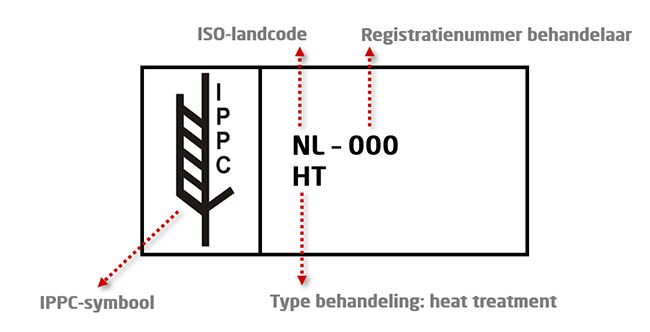
Good to know: older wooden packaging often still carries the additional designation DB. This stands for ‘debarked‘. In the meantime, however, debarking has become a compulsory measure, so this marking is no longer listed separately.
4. Does the ISPM15 standard apply to any wood packaging?
The ISPM15 standard is mandatory in a growing number of countries. The standard applies to all wood packaging materials. However, people foresee some exceptions to this rule. For example, the materials listed below were already exposed to very high temperatures during their manufacture, making separate treatment unnecessary.
- Wood packaging that has been glued, heated or pressed during processing, such as chipboard, plywood and veneer.
- Wood components permanently attached to trucks and containers.
- Wood packaging material consisting of thin wood up to 6 mm max.
- Wood wool, wood shavings and sawdust.
5. What are the advantages of wood pallets?
]Environmentally friendly, ideal for export, super sturdy… These are just some of the many advantages cited when talking about wood pallets. We list them all for completeness:
5.1 Environmentally friendly
Wood possesses top properties, both from a logistical and ecological point of view. Wood is a natural raw material that originates from trees. And what is the big advantage of trees? You can plant, grow and harvest them in an almost infinite cycle. So they do not deplete our natural resources. Has your wood pallet had its day? Then you can have it recycled without any problem. Who knows, maybe the next box you hold will be made from one of your old pallets? Closing the resource cycle – that’s what this is all about.

5.2 Robust
The kind of wood from which pallets are made has a high density. As a result, it can withstand a lot of pressure and can support a large weight – up to 1,500 kg. Conclusion: if you ship heavy goods, use wooden pallets instead of one made of wood fibre or cardboard. Want to know what you do use wood fibre or cardboard for? Then check out our general choice guide for pallets here.
5.3 Stable
A wood pallet gives your load an extremely stable base. The long flat ‘skids’ at the bottom of the pallet optimally cushion the weight. Wood is also a material that is naturally non-slip. This reduces the risk of your load sliding and falling off the pallet. So in terms of load securing, you are best off with wood pallets.
5.4 Ideal for export
Wood pallets are immensely popular in the world of import and export. Their sizes are standardised worldwide, making it easy to exchange them between companies. However, as you saw, this globalisation also carries a risk: wood can be a source of parasites and micro-organisms that transmit diseases from one continent to another. To nip that risk in the bud, the ISPM15 standard was devised. Wooden pallets with this label have been treated in such a way that they can be used for export without any problem.
]6. What types of wood pallets exist?
Wooden pallets are made from different types of wood. For the load-bearing parts, one often uses strong oak. For the other parts, they tend to use pine (or pine).
In the world of pallets, a distinction is traditionally made between two sizes: the American and the European size. The American size is 1200 x 1000 mm and is mainly used in the US, Canada and Japan. The European size is 1200 x 800 mm. This size is perfectly compatible with most European trucks. Finally, there is also the ‘display pallet’. This is the smaller brother of the European pallet and is usually only found in Europe. Another good thing to know by the way: the European pallet and the display pallet are often printed with the logo EUR or EPAL.
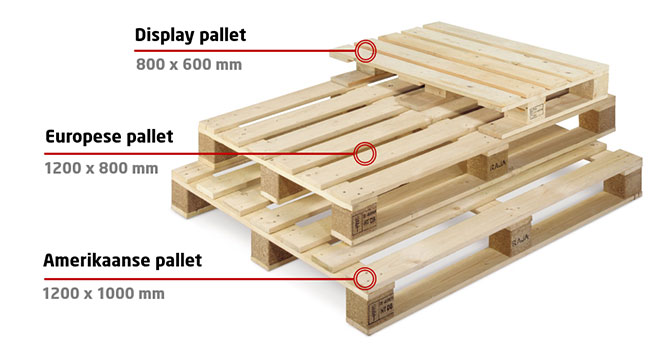
Max. load* |
European pallet |
Display pallet |
American pallet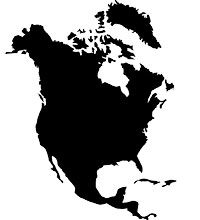 |
| Up to 1500 kg | 1200 x 800 mm | ||
| Up to 1000 kg | 1200 x 800 mm | 1200 x 1000 mm | |
| Up to 800 kg | 1200 x 800 mm | ||
| Up to 600 kg | 800 x 600 mm |
* The maximum load listed here always refers to the dynamic load of your cargo. To find out exactly what this means, you can consult our selection guide for pallets here.
View our full range of wood pallets here










